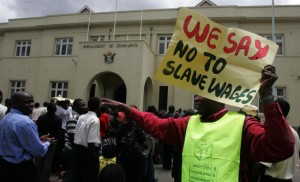
Back in 2017 when Republicans eliminated the federal deduction for state and local taxes under the Tax Cuts and Jobs Act, they weren’t exactly subtle about efforts to stick it to high-tax blue states. Capping the property tax deduction at $10,000 for married couples hits wealthy Connecticut filers a lot harder than it does their cousins in Alabama. Trump even admitted to Sean Hannity that part of the purpose of the tax cut was “to say, hey, make sure that your politicians do a good job of running your state. Otherwise, you are not going to benefit.”
If this was intended to bring a red wave to New Jersey, it seems to have failed. Instead, it ushered in an era of creative tax policy-writing as states tried to protect their citizens from a heart-stopping increase on their federal returns. Because the Republican tax cut plan preserved the charitable deduction, many states sought to recharacterize state tax payments as charitable donations. This would allow residents to max out their $10,000 in deductible property taxes, and then pay the remainder of their bills to a “charity” administered by the state.
The suit filed yesterday by New Jersey, Connecticut, and New York — of course there’s a lawsuit, this is 2019! — sketches out the general scheme, theorizing an excess tax bill of $10,000:
In New Jersey, to use one example, the taxpayer would receive a tax credit worth 90 percent of the donation—in this case, a $9,000 property tax credit. (In a state where the tax credit is worth 85 percent of the donation, she would simply receive an $8,500 property tax credit.) The taxpayer would then pay the remaining $1,000 in property tax liability to the local unit in question.
This works out great for New Jersey, which nets the $10,000 “donation,” plus an additional $1,000 to cover the portion of the tax bill not offset by the tax credit. It works out less well for the Trump administration, which had hoped to blunt the budget-busting effect of its tax plan at the expense of blue-state taxpayers.
So Treasury Secretary Mnuchin and IRS Commissioner Charles Rettig put on their green eyeshades and came up with a plan to put the kibosh on all those state workarounds. They decided the state’s charitable tax credit was a quid pro quo, akin to getting tickets to the Vitamin C Ball in exchange for a donation to the Foundation for the Prevention of Rickets, and capped the allowable credit at 15 percent. So a state which offers a 15 percent credit on a $10,000 charitable donation, reducing the taxpayer’s liability by $1,500, is not offering a quid pro quo, meaning the entire amount is deductible. But at 16 percent, the extra $100 magically transforms it into a $1,600 bribe. In other words, Mr. and Mrs. New Jersey Taxpayer are sh*t outta luck.
But don’t count those coastal elites out yet! They’re suing Mnuchin, Rettig, the IRS, and the Treasury for violating the Administrative Procedures Act by exceeding their statutory authority and imposing arbitrary and capricious regulation. The charitable workaround may be an obvious wheeze to continue to give their residents a break on their federal returns, but there’s nothing in the GOP tax plan that forbids it. If Congress had wanted to close that loophole, they had a chance to do it last year. And they didn’t.
Moreover, coming up with that 15 percent cap looks an awful lot like legislating from the executive branch, despite Treasury’s claims that a seemingly arbitrary “cliff effect” is somehow necessary to equalize the disparate treatment of deductions and credits in the statute. But that’s a question for the U.S. District Court for the Southern District of New York where Attorneys General for Connecticut, New York, and New Jersey filed their suit yesterday.
The country may be divided, but at least the Trump administration is Making Lawyers Great Again!
Complaint For Declaratory and Injunctive Relief [New Jersey v. Mnuchin, No. 1:19-cv-06642-1 (S.D.N.Y. July 17, 2019)]
IRS Final Rule: Contributions in Exchange for State or Local Tax Credits [84 FR 27513]
Elizabeth Dye lives in Baltimore where she writes about law and politics.











 Scott Alan Burroughs, Esq. practices with
Scott Alan Burroughs, Esq. practices with 






